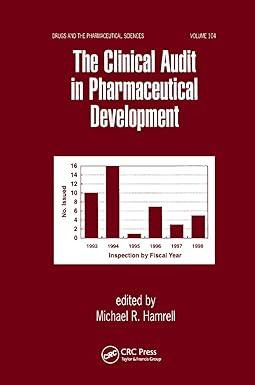Question
QUESTION ONE El libro de la vida Ltd. El libro de la vida is a multi-divisional book company that listed on the stock exchange about
QUESTION ONE
El libro de la vida Ltd. El libro de la vida is a multi-divisional book company that listed on the stock exchange about three years ago. The company has defined its strategy in the following way; To become a world leader in digital innovation, develop direct relationships with readers, building ecommerce programs and introducing interactivity to digital books. Like many in the industry, El libro de la vida started out in the 1980s as a single-site suburban bookstore. Company CEO Carlos Fuentes has been in the role for three years, having joined the company around the time of its stock exchange listing. It was expected that the listing would provide much needed capital to enable the company to compete in what was becoming a rapidly changing and dynamic environment due to: continual merger and acquisition activity developments in technology such as e-readers and e-books as well as in the development of digital applications the financial difficulties experienced by industry participants particularly in the retail sector. The company is currently structured around three main divisions as follows. Publishing: This division publishes educational textbooks, adult fiction and non-fiction books, and childrens books. El libro de la vida has a strong reputation for producing educational texts for the school and university markets. Publishing division doesnt have autonomy in transfer-pricing decisions and must sell its products internally to the Retail division. If there is spare capacity, Publishing division is allowed to sell its products in the outside market. Retail: This division grew out of the original shop. El libro de la vida owns a number of specialist bookshops itself with a focus on developing close links with customers. Of course, the retail shops also served as an outlet for many of the books published by the Publishing division. As well as owning its own shops, El libro de la vida had also taken an ownership stake in a number of specialist retail bookstore chains. Technologies-based division: This division focuses on technological applications and works closely with the Publishing division in particular. This includes developing technological content to support the hardcopy textbooks produced by the Publishing division. For example, a recent project included the development of smart-card technology containing interactive software that enables students to self-test on content in the specific chapters of an auditing text. Technologies-based division doesnt have autonomy in transfer-pricing decisions and must sell its products internally to the Publishing division. If there is spare capacity, Technologies-based division is allowed to sell its products in the outside market. Each divisional manager is evaluated on the basis of return on investment along with a mix of other financial measures. Bonuses are paid on the basis of ROI performance alone. Transfer pricing issues While senior management valued divisional manager autonomy and decision making, they felt the organisational interests should normally prevail. To this end, the key components of the companys transfer pricing policy were: all transfers would occur at full costs plus a mark-up of 10 per cent there would be no sourcing autonomy; transacting internally would be the first priority divisions would be permitted to use any spare capacity to meet external demand. The manager of the Technologies-based division Eva Mendez has raised concerns about the policy. Eva is proud of the innovation and creativity with the technological developments the division has been able to generate, particularly in the last two years. This has resulted in an increase in demand for their services from external customers including other book publishers ACCT 1014 Final Examination (MEL), Semester 1, 2020 Page3/6 RMIT Classification: Trusted and educational institutions. Eva argues that her divisional ROI would be higher if she had more autonomy to service outside customers. She says full costs plus 10 per cent just does not give us enough of a return . . . we could be earning twice the profit on outside work.
REQUIRED:
(a) Evaluate the current transfer pricing system (discuss two strengths and two limitations). Is this system appropriate from the corporate viewpoint? (5 marks)
(b) What changes would you make to help address each of the two limitations you identified? How would these changes be an improvement on the current system? (4 Marks)
(c) Discuss two benefits and two drawbacks of the current performance evaluation and reward system. Is this system appropriate from the corporate viewpoint? (5 marks)
(d) Provide three specific recommendations on improving the current performance evaluation and reward system for El libro de la vida. How do they help the company to achieve goal congruence? (6 marks)
Step by Step Solution
There are 3 Steps involved in it
Step: 1

Get Instant Access to Expert-Tailored Solutions
See step-by-step solutions with expert insights and AI powered tools for academic success
Step: 2

Step: 3

Ace Your Homework with AI
Get the answers you need in no time with our AI-driven, step-by-step assistance
Get Started


